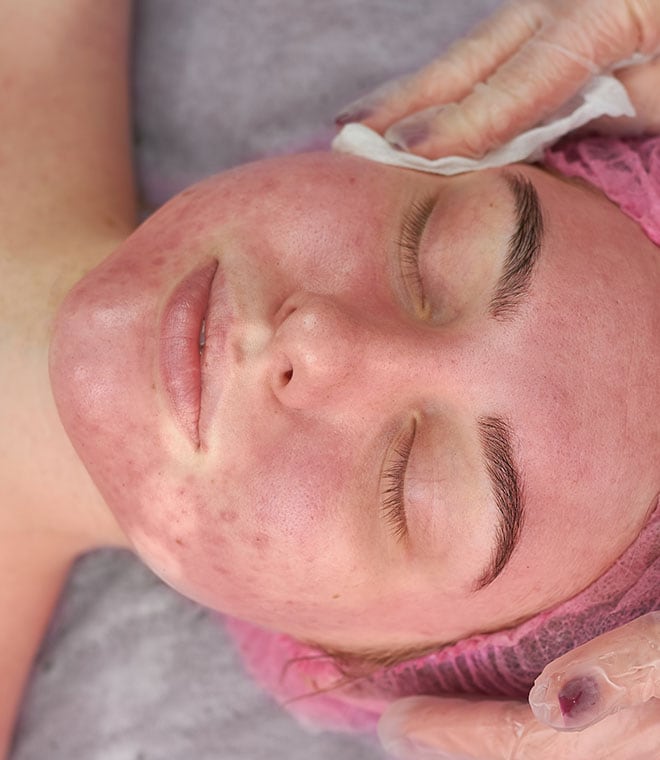Health
What are some common melasma causes?
By Ruben J. Rucoba, MD Dec 19, 2023 • 5 min
Melasma can be frustrating because it can unexpectedly change your skin color in certain areas of your face. But what is melasma exactly? Melasma is a common and harmless skin discoloration on the face in which dark patches appear, most commonly on the cheeks, bridge of the nose, forehead, chin or above the upper lip. Because of the location, it's sometimes referred to as a "melasma mustache." While it poses no health threat, melasma may make people feel self-conscious. Understanding the causes of melasma is the first step in addressing the issue.
Who gets melasma?
Melasma can affect anyone but is much more common in people of color, and most of those affected are women. People with brown skin are particularly susceptible to melasma, especially those who live in a sunny environment. Often called the "mask of pregnancy," melasma is very common in women who are pregnant. Genetics play a role as well. Almost half of those with melasma have a blood relative who has it.
What causes melasma?
The exact cause of melasma is unclear. Melasma likely occurs when melanocytes (the cells in your skin that make color) produce too much color. People of color may be more likely to get melasma than those with lighter skin, possibly because their melanocytes are more active. There are several factors that are known to trigger melasma.
Triggers of melasma are:
- Sun exposure — Sunlight is one of the most common triggers. Even small amounts of sun exposure from activities like walking outside in the park or driving can cause melasma to come back after it has faded.
- Hormonal changes — Pregnancy is a common cause of melasma, likely due to hormonal changes. During pregnancy, melasma is also known as chloasma. Hormonal changes from birth control pills and post-menopausal progesterone replacement therapy can also trigger melasma.
- Skin care products and cosmetics — Any type of product that irritates the skin may make melasma worse.
- Medicines — Some medicines, such as anti-seizure medicines, steroids and drugs that make your skin more sensitive to sunlight or other forms of ultraviolet (UV) light, can trigger melasma.
Is melasma dangerous?
No, melasma is not dangerous. It's not skin cancer and does not develop into skin cancer.
However, this skin discoloration on the face can look like some skin cancers, so your dermatologist (skin care doctor) may want to do further tests to confirm it is melasma and not something else.
Those with melasma are much more likely to have hypothyroidism, though it's not entirely clear why that is. People with melasma may be advised to have their thyroid function checked.
How is melasma diagnosed?
Melasma is usually diagnosed by a simple examination of the skin. A doctor will sometimes use a special lamp called a Wood's light. In other cases, a biopsy may be needed to rule out another skin condition.
How is melasma treated?
In many cases, especially those caused by pregnancy and birth control pills, melasma may resolve on its own when the pregnancy is over or the birth control pills are discontinued, and no treatment is needed. Other times, it's a chronic condition that can last months, years or even permanently. Therapy often includes avoiding the sun, wearing sunscreen and applying over-the-counter dark spot correctors or medications to your skin.
If your melasma doesn’t respond to medications, your dermatologist may recommend procedures such as chemical peels or laser therapies. There is a chance that skin may become irritated with some of these procedures, which can worsen melasma.
Melasma is common, especially among women and those with darker skin. Even though it’s not dangerous, it can cause people to feel self-conscious. Much of the time, melasma goes away on its own, but if not, there are effective treatments. Be sure to consult with a dermatologist who is familiar with the condition and who has successfully treated people with your skin color.
Clinically reviewed and updated by Julie McDaniel, MSN, RN, CRNI December 2023.
Sources:
- https://www.aad.org/public/diseases/a-z/melasma-overview
- https://skinofcolorsociety.org/patient-dermatology-education/1406-2/
- https://americanpregnancy.org/healthy-pregnancy/pregnancy-health-wellness/skin-changes-during-pregnancy/
- https://www.ncbi.nlm.nih.gov/books/NBK459271/
- https://www.aad.org/public/diseases/a-z/melasma-causes
- https://www.aad.org/public/diseases/a-z/melasma-treatment
- https://www.health.harvard.edu/blog/melasma-what-are-the-best-treatments-202207112776
- https://medlineplus.gov/ency/article/000836.htm
- https://www.skincancer.org/blog/when-beauty-products-cause-sun-sensitivity/
- https://www.health.harvard.edu/blog/melasma-what-are-the-best-treatments-202207112776



